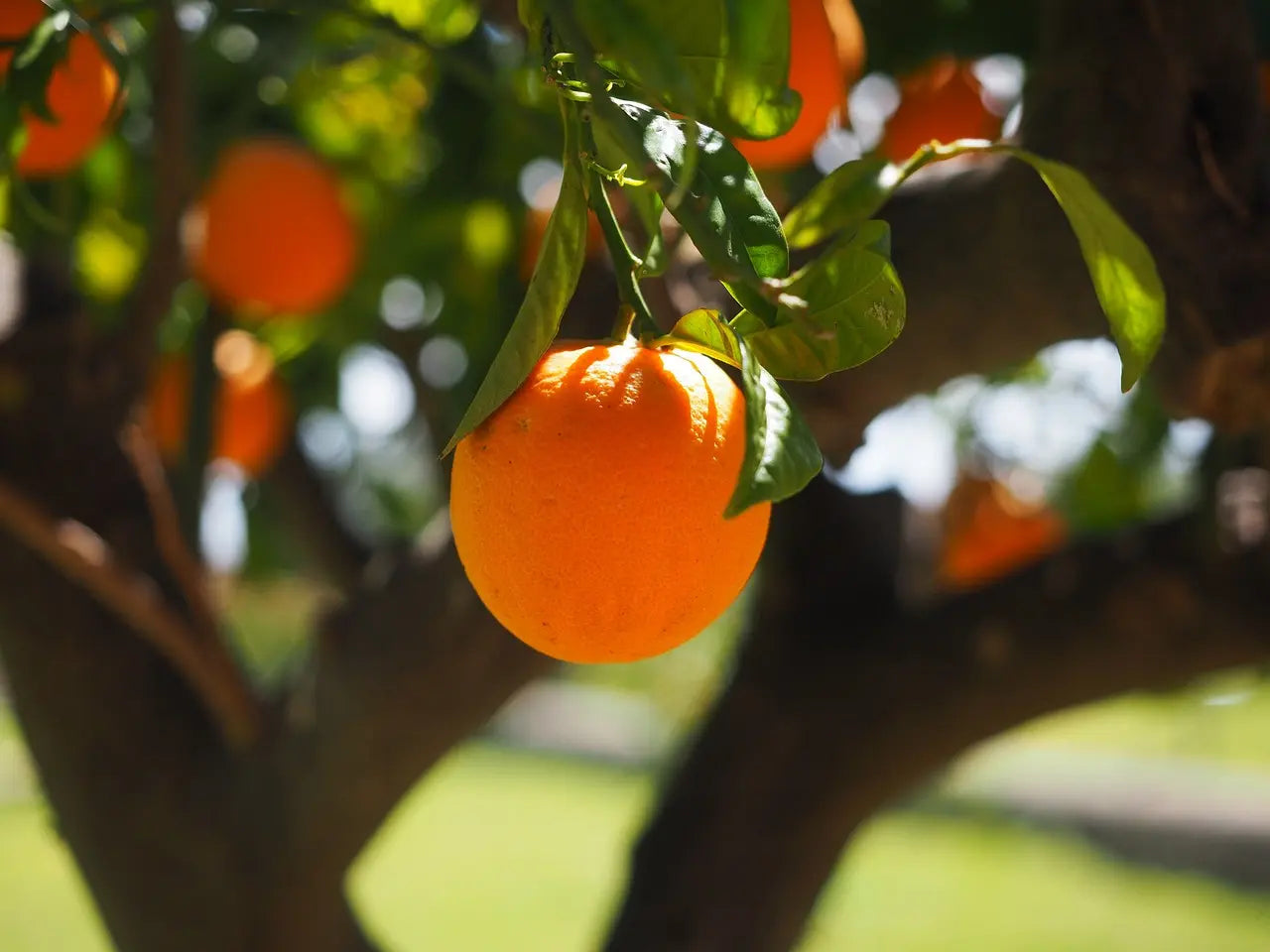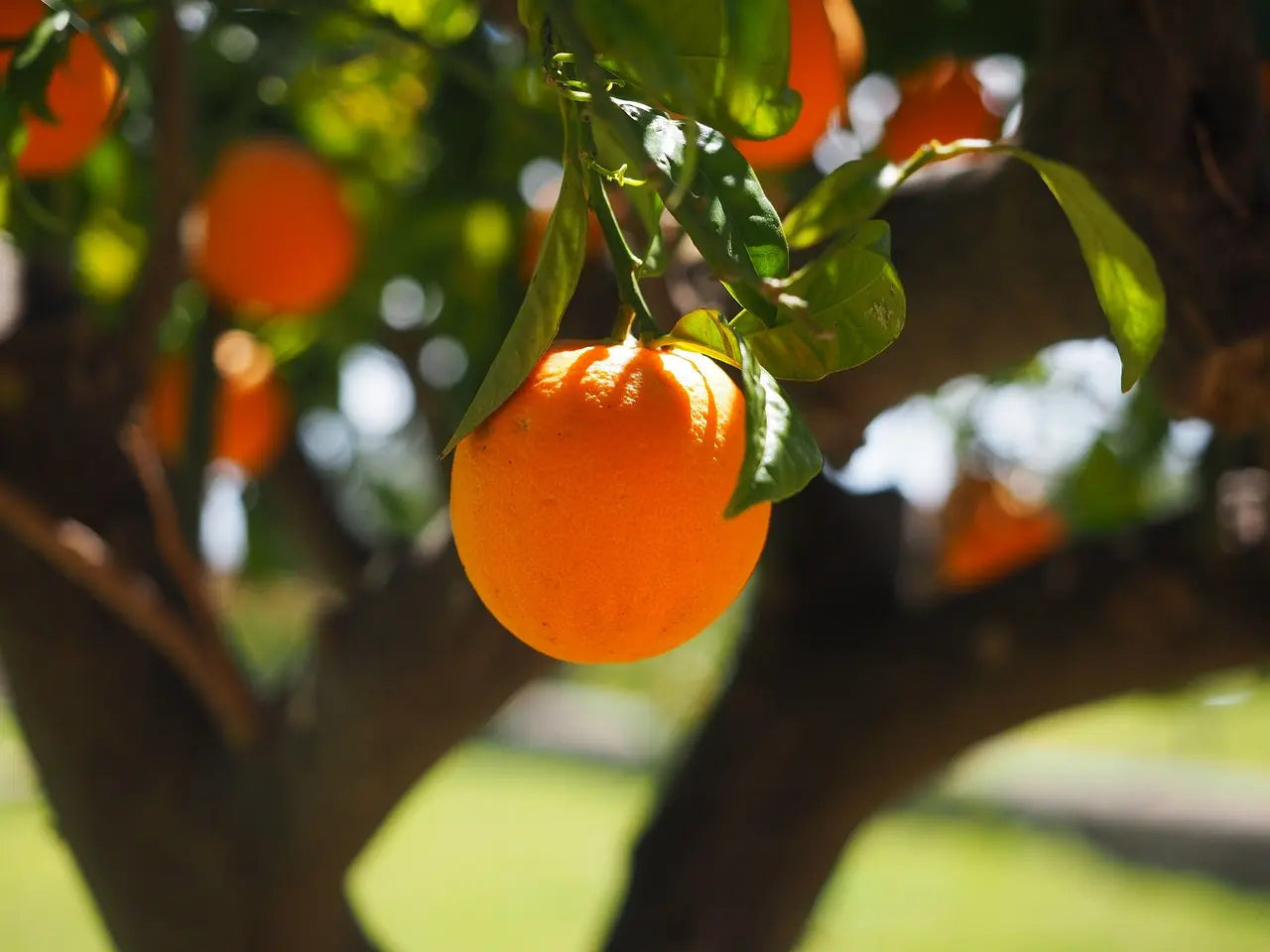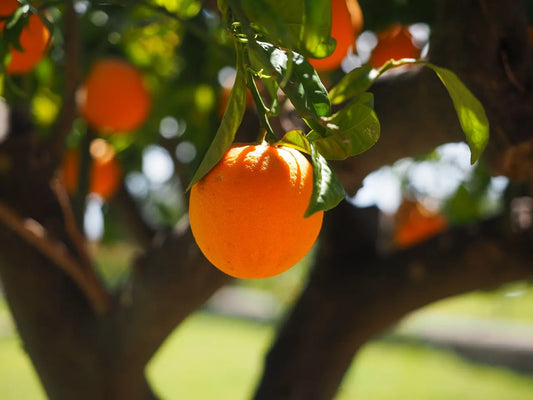-
Delivery from 50 plants / 10 rootstocks Europe & Switzerland
Delivery method -
Wholesaler of Citrus Plants, Exotic Fruit Plants and Rootstocks
About Us -
Quality Citrus Plant and Rootstock
Citrus technical itinerary -
Secure payment
Our Payment Terms
Grafted Barnfield Late Navel Orange Tree on Volkameriana rootstock 3L pot
Grafted Barnfield Late Navel Orange Tree on Volkameriana rootstock 3L pot
The prices shown are our base prices for large volumes. Depending on the quantity ordered and the producers’ pricing scales, the rate may be adjusted upward. Each quote is personalized to ensure you receive a fair price.
- Minimum order: 100 units
Couldn't load pickup availability
Recommended Commercial Use: Processing and Fresh Sale
This citrus variety is suitable for both fresh sales and processing (juice, compote, fruit paste, jam). Do you have demand for these products but don't know which variety to choose? We can advise you. Contact Us
View full details
Barnfield Late Navel orange tree plant at producer prices for professional citrus growers
Barnfield Late Navel Variety Fact Sheet
- Fruit skin color: Deep orange.
- Fruit Size and Shape: Fruits are medium to large in size, slightly smaller than those of Lane Late, but this difference is not significant. Shape not specified in sources.
- Fruit Maturity: Very late, ripens up to 150 days after the Lane Late variety. Fruits can be harvested from January to May. Ripening begins in January and can continue until May.
- Fruit Taste: Sweet and juicy, with a more intense flavor than Lane Late.
- Earliness of the variety: Ultra late, it ripens later than Lane Late.
- Fruiting period: From January to May. Flowering occurs in spring and harvest in winter.
- Disease Resistance and Storage: Good disease resistance. The fruit can be stored on the tree for a longer period than other varieties, extending the navel orange season.
- Variety Yield: Yields are substantial, and mature trees produce good quality. The average yield in kg per tree is not specified in the sources.
- Is this variety self-fertile? Yes, the Barnfield Late Navel Orange tree is self-fertile. Fruit growth and quality can benefit from cross-pollination, achieved by planting multiple trees of the same variety.
-
Commercial use:
- Fresh consumption: Recommended for fresh consumption.
- Processing: Can be used for processing into juice, but it is often consumed directly for its exceptional taste quality.
- Is this a COV variety? Not specified in the sources. It is recommended to check local specifications in France for orange plants, as requirements may vary depending on regulations and recommendations from French agricultural authorities.
-
Comments:
- The Barnfield Late Navel orange tree was selected by Wayne Barnfield in Australia in 1985.
- It results from a natural mutation of a Washington Navel button.
- The tree can tolerate temperatures down to -7°C.
- The tree prefers full sun exposure and adapts well to different soil types, but grows best in rich, well-drained soils.
- Regular watering is important, especially during the fruiting period.
Agrumiverse and the Barnfield Late Navel Orange Tree
Agrumiverse, a specialist wholesale supplier of citrus plants, offers the Barnfield Late Navel Orange tree, an exceptional late-ripening variety. Ideal for growers looking to extend the navel orange season, this variety stands out for its late maturity, remarkable flavor, and long shelf life on the tree. Buying Barnfield Late Navel Orange plants provides access to an excellent variety that meets the growing demand for high-quality fresh fruit at the end of the season.
Characteristics of Barnfield Late Navel Fruits
Fruit size and appearance
Barnfield Late Navel oranges are round and uniform in shape, with a smooth, thin skin. Their size, slightly smaller than that of Lane Late Navel, has an average diameter of 80 mm and a weight of 225 g. Visually appealing, these fruits change from a deep orange in winter to a pale yellow-orange with green spots in spring, ensuring an attractive and distinctive presentation on the market.
Exceptional taste quality
This variety is prized for its intense, balanced sweet flavor combined with low acidity. The juicy, seedless pulp is enclosed in tender membranes. These characteristics make this orange perfect for fresh consumption, often preferred over other varieties due to its superior flavor profile.
Extended storage
One of the major advantages of Barnfield Late Navel is its ability to remain on the tree for up to six months after maturity, without any deterioration in internal or external quality. This allows for flexible harvesting, from January to June, meeting the demand for late-ripening fruit when supply is limited.
Barnfield Late Navel Tree Characteristics
Tree size and shape
This orange tree grows to a height of 3 to 4 meters with a dense, rounded shape. Its moderate vigor allows for simplified management, while light pruning after harvest promotes optimal structure and consistent production.
Resistance and adaptation
- Hardiness: This tree tolerates temperatures down to -5°C, or even -7°C with precautions such as mulching.
- Calcareous soils: Barnfield Late Navel is particularly resistant to calcareous soils, a valuable characteristic for growers in regions with difficult conditions.
- Drainage and Irrigation: As with most citrus fruits, well-drained soil and regular watering are essential to avoid fungal diseases.
Self-fertility and pollination
Self-fertile, this variety does not require external pollination. However, maximum sun exposure optimizes flowering and fruit quality, offering a higher yield.
Economic and commercial advantages
Substantial return
Growers enjoy high yields from this variety, although exact results depend on cultivation practices. The excellent fruit quality makes it suitable for targeting premium markets, particularly for fresh consumption.
Extension of the sales period
Thanks to the fruit's ability to remain on the tree for several months, growers can extend their harvest and sales periods, maximizing their commercial opportunities. Buying Barnfield Late Navel Orange plants guarantees market gardeners a differentiating product to meet the increased demand for late-ripening fruit.
Diversification of uses
Although preferred for direct consumption, Barnfield Late Navel is also suitable for processing into high-quality juice, providing an additional valorization option.
Good cultural practices
- Exposure: Full sun exposure is essential to maximize yields.
- Pruning: Light pruning after harvest promotes even production.
- Fertilization: Inputs rich in nitrogen, phosphorus and potassium stimulate the growth and quality of the fruits.
- Disease Management: Although resistant, this variety requires proactive monitoring to avoid pests such as orange worm and fungal diseases.
Why choose Agrumiverse?
Agrumiverse, a specialist wholesale supplier of citrus plants, offers the highest quality Barnfield Late Navel Orange plants. By choosing our plants, market gardeners benefit from:
- Complete expertise: Personalized advice and support at every stage.
- Economic advantage: Bulk purchasing and competitive rates.
- Commercial flexibility: A late variety to meet demanding end-of-season markets.
Conclusion
Barnfield Late Navel Orange is a must-have variety for citrus growers looking to extend their production season with excellent-quality fruit. Its resilience, long shelf life, and superior taste offer a unique opportunity to stand out in the marketplace. Contact Agrumiverse, a specialist citrus plant wholesaler, to purchase your Barnfield Late Navel Orange plants and maximize your crop performance today.
-
Grafted Barnfield Late Navel Orange Tree on Volkameriana rootstock 3L pot
Regular price €10,00 EURRegular priceUnit price / per -
Grafted Barnfield Late Navel Orange Tree on Amargo rootstock 3L pot
Regular price €10,00 EURRegular priceUnit price / per -
Grafted Barnfield Late Navel Orange Tree on Citrange C35 rootstock 3L pot
Regular price €10,00 EURRegular priceUnit price / per -
Grafted Fino Lemon Tree on Macrophylla rootstock 3L pot
Regular price €10,00 EURRegular priceUnit price / per


